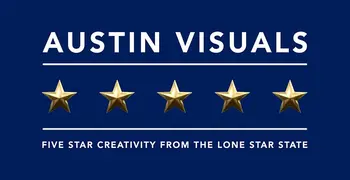
How fast do you like to consume your content? According to a study, the attention span of humans is less than that of a goldfish — eight seconds. It goes without saying that people are hungry for content and consuming it at a faster pace than ever before. The on-the-go nature of content consumption demands immediate output.
To satisfy the need of instant gratification, marketers have to refine their content marketing strategy. Let’s take a look at four different ways instant gratification has changed content marketing and what lessons you can learn from it.
1. Snackable content.
Snackable or bite-sized content is becoming the norm in this digital era. When it comes to consuming content, your audience places a high value on their time. For that reason, you need to make sure that your content is short and concise, so it can be easily seen, scanned and shared on the go.
In addition, you might also want to make your content easy to absorb when it’s shared and viewed on social networks. Consider adding open graph (OG) tags to your website. OG tags are for social media what meta tags are for search engines. They create a beautiful preview on newsfeeds when your content is being shared on social networks. Since users will be busy scrolling down their newsfeeds to find the relevant content that grabs their attention, this preview hugely influences their decision to click on it or not. Before publishing content, you might want to check out how your posts will be previewed on popular social networking sites. By optimizing the preview, you can ensure that content created on those platforms is snackable.
2. Faster distribution.
It is not surprising that nearly half of your website visitors expect your site to load in less than three seconds. Even worse, if it fails to load, most will abandon your site and likely go to your competitor’s site. This is the primary reason why digital trend drivers developed new services to provide users with instant gratification like Google AMP and Facebook Instant Articles.
Google AMP: This is an initiative aimed at speeding up mobile rendering experience while browsing the open web. The basic idea is to dramatically boost page speed by serving web pages using an additional, light-weight stripped down version of your website.
Facebook Instant Articles: It helps you to load a stripped-down version of your blog when someone clicks your link from the Facebook app. This way, you can load your website almost instantly to your visitors on Facebook.
If you run a blog and haven’t enabled Google AMP and Facebook Instant Articles yet, you might want to check them out so you can deliver a faster reading experience and satisfy your customer’s instant gratification.
Welcome to Austin Visuals. We hope you’re enjoying this article! While you’re here, please take the opportunity to browse the visual stories and solutions we’ve created for our clients. If you have an article you’d like us to publish, email us at [email protected].
- Google Entity Search.
Google’s Entity Search helps users access the information they’re looking for right in the Search Engine Result Page (SERP). With Entity Search, users don’t have to dig through organic and paid listings to find answers. Google introduced this feature to increase the relevancy of search results by identifying user intent based on each individual search. Since it provides quick answers, it satisfies instant gratification in content consumption.
The Entity Search feature is now focused on providing personalized search results based on user’s previous searches, preferences and connections from Gmail and Google+ accounts. Unfortunately, there is no way to ensure your content will appear in Entity Search results. However, you can work on creating a strong presence for branded phases and own the panel for your brand.
- Content personalization.
Personalization is the process of targeting content to individuals based on their needs and preferences. To satisfy instant gratification of your prospects, 1:1 personalization becomes a must-have of every major digital initiative. That way, users don’t have to spend time on digging deeper to get what they’re looking for.
It is impossible to manually personalize content for each of your prospects. But there are few tools that help you create a personalized user experience on your site.
- Google Optimize 360: Google Optimize is a free A/B testing tool available to every Google Analytics user, but the content personalization feature is only available to enterprise users.
- Adobe Target: It is the most established personalization engine available in the market.
- Evergage: It is a real-time personalization platform that comes with a wide range of features for serving personalization for content marketing.
The shift toward instant gratification may create obstacles for brands looking to increase awareness through content marketing. However, by transforming your content strategy to meet users’ expectations, you can stay ahead of the curve.
I want what I want, and I want it now. Even if I will be disappointed with it later.
Austin Visuals is a full-service 3D, 2D, Motion Graphics, Live Video, E-learning, Digital Publication studio. We’ve been creating digital magic nationwide for a decade. We work with companies of all sizes from startup to standout. Call us for a free consultation. 512-591-8024 [email protected]





